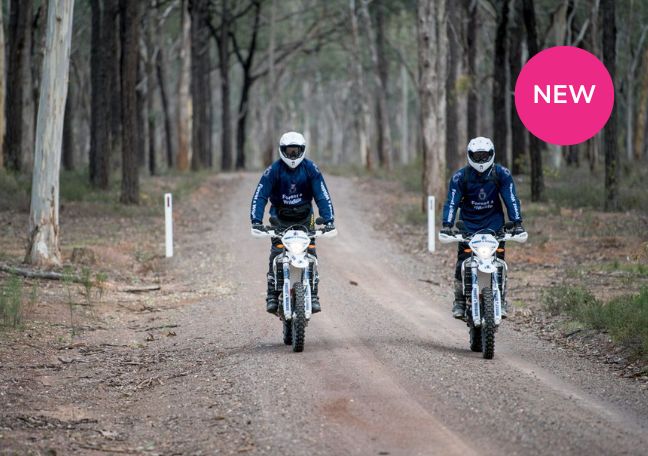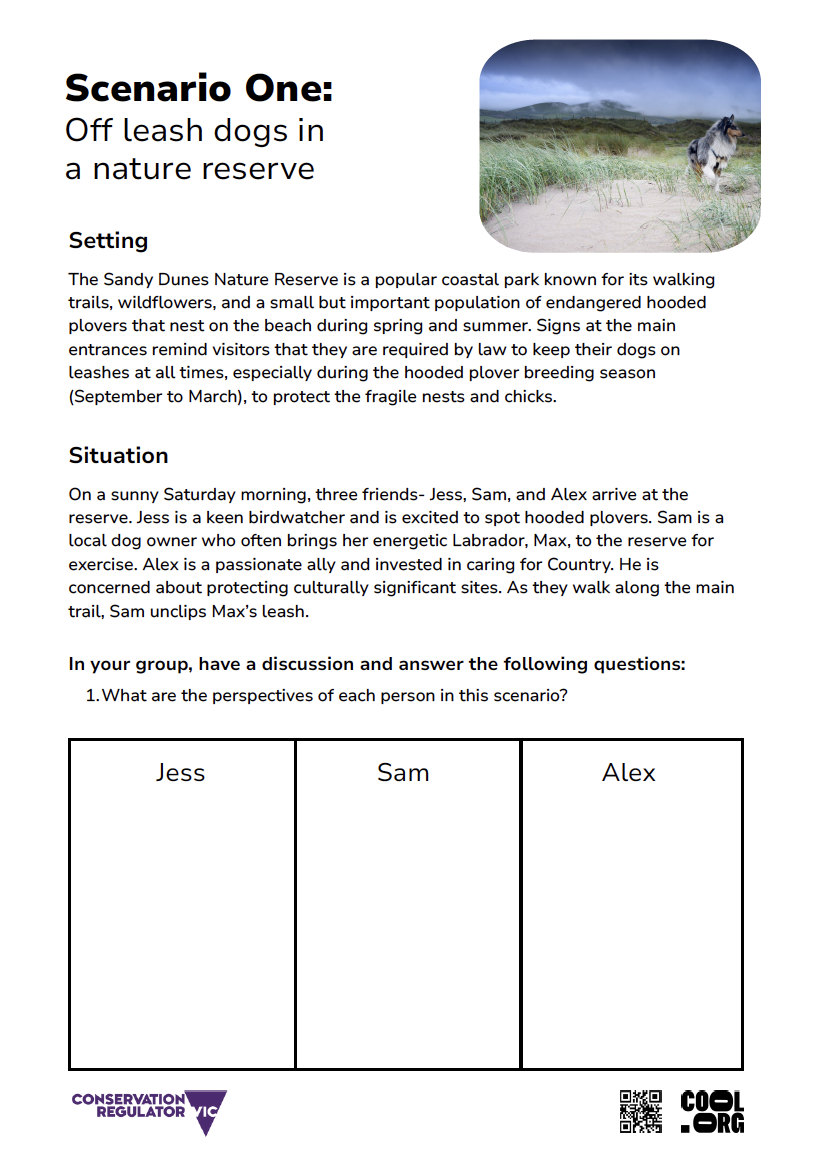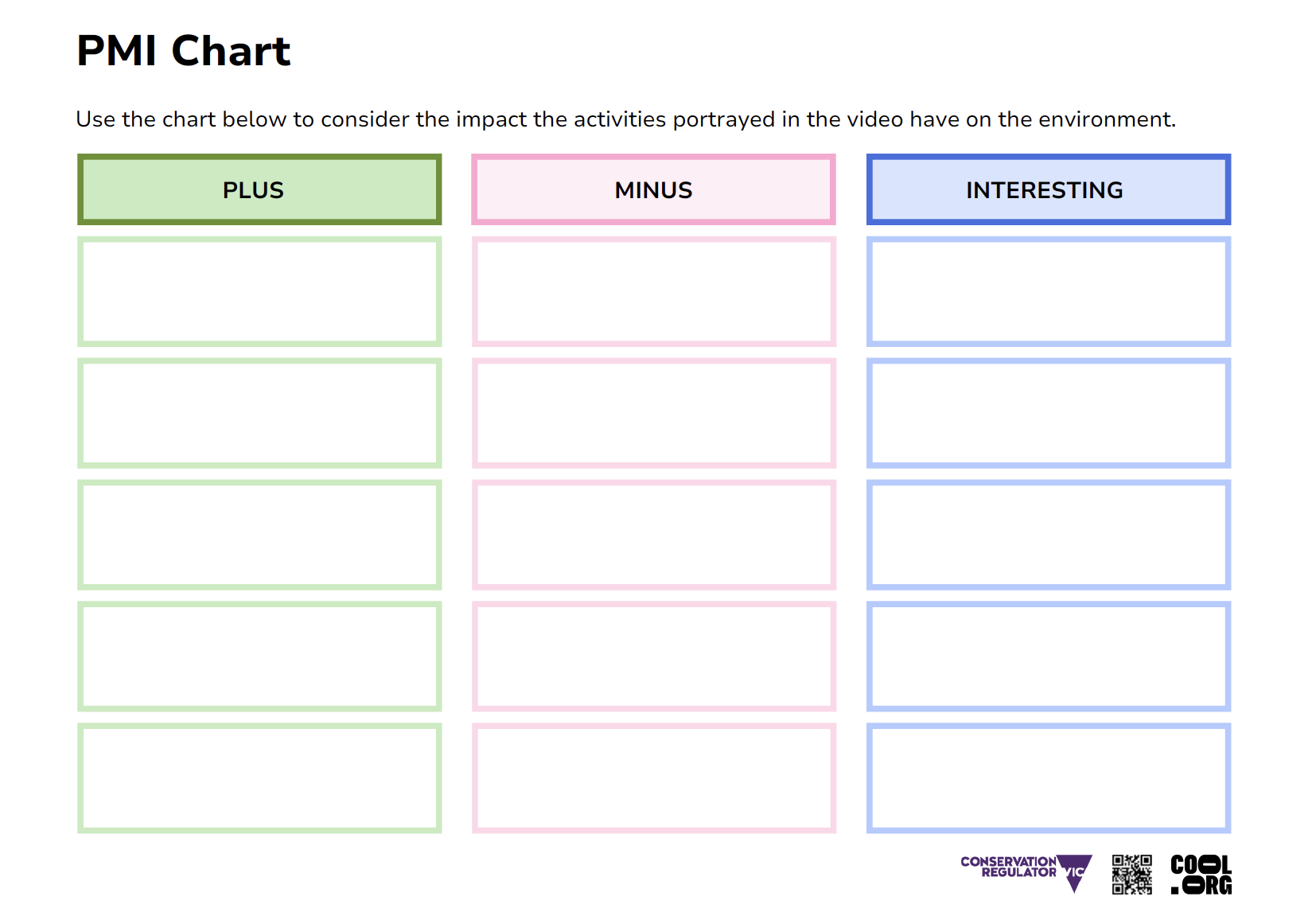Lesson summary
Students will understand the impact of human behaviours on natural habitats and the reason the Conservation Regulator exists, which is to help protect our natural environment. They will explore a number of perspectives within the community, including Traditional Owners. They will create an awareness campaign to encourage voluntary compliance - a key tenet of the Conservation Regulator.
Learning intentions:
Students will...
- understand the Conservation Regulator’s role in protecting our natural environment
- analyse multiple community perspectives on protecting Country, including those of Traditional Owners.
Success criteria:
Students can...
- identify how recreational and lifestyle choices impact places, habitats, and wildlife
- explain strategies, including voluntary compliance with regulations supporting sustainability and respecting cultural heritage.
Lesson guides and printables
Lesson details
Skills
This lesson is designed to build students’ competencies in the following skills:
- creative thinking
- critical thinking
- community engagement
- cultural understanding
- ethical understanding
Curriculum Mapping
Australian Curriculum (v9.0) content description:
Year 9 & 10, Geography
Students learn:
- the effects on places of people’s travel, recreational, cultural or leisure choices, and the strategies for managing the impacts on these places (AC9HG9K06)
- learn the causes and effects of a change in an identified environment at a local, national or global scale, and strategies to manage sustainability (AC9HG10K04)
- about human-induced changes that challenge the sustainability of places and environments (AC9HG10K01).
Relevant parts of Year 9&10 achievement standards: Students explain how the interactions of people and environmental processes at different scales change the characteristics of places. They explain the effects of human activity on environments over time.
Victorian Curriculum (v2.0) content description
Year 9 & 10, Geography
Students learn about
- human-induced environmental changes and their impacts on the sustainability of places and environmental functions (VC2HG10K10)
- the impacts on places of people’s travel, recreational or cultural choices, and how these can be managed, including those impacting Aboriginal and Torres Strait Islander Peoples and their Country and Place (VC2HG10K08).
Relevant parts of Year 9&10 achievement standards: Students explain the impacts of human activity on environments, and the effect of environments on human activity, over time. They evaluate interconnections between people and places and environments. They analyse changes that result from these interconnections and their consequences.
NSW Syllabus outcomes:
A student
- assesses different approaches to the management and protection of places and environments (GE5-MAN-01)
- explains Aboriginal Peoples’ Custodianship, care and management of Country (GE4-APC-01).
General capabilities: Critical and Creative Thinking, Ethical Understanding, Personal and Social Capability
Cross-curriculum priority: Aboriginal and Torres Strait Islander Histories and Cultures, Sustainability
Level of teacher scaffolding: Medium - Facilitate class discussion and organisation of groupings and materials.
UN Sustainable Development Goals
- Target 4.7: Take urgent and significant action to reduce the degradation of natural habitats, halt the loss of biodiversity and, by 2020, protect and prevent the extinction of threatened species.
Resources Required
- Activity sheet - Community Setting Scenarios
- Activity sheet - PMI The Natural Playground
- Canva access and/or poster paper and marker pens
- Device for sharing video clip - The Natural Playground
Additional Info
This lesson has been developed in partnership with the Conservation Regulator, a government agency responsible for regulating fire prevention, the use of public land, wildlife, and biodiversity. Through a combination of enforcement and education activities, the Conservation Regulator aims to maintain the health and heritage of these landscapes for future generations to enjoy.
Related Professional Learning
Using The Cool.org Act Framework In The Classroom - Secondary
Quick Summary: The Cool.org Act Framework offers a variety of strategies and tactics to facilitate meaningful action across different levels and settings. This course shares action-based resources from Cool.org and provides practical examples for integrating action-oriented learning into your classroom.





Welcome back!
Don't have an account yet?
Log in with:
Create your free Cool.org account.
Many of our resources are free, with an option to upgrade to Cool+ for premium content.
Already have an account?
Sign up with:
By signing up you accept Cool.org's Terms and Conditions(Opens in new tab) and Privacy Policy(Opens in new tab).